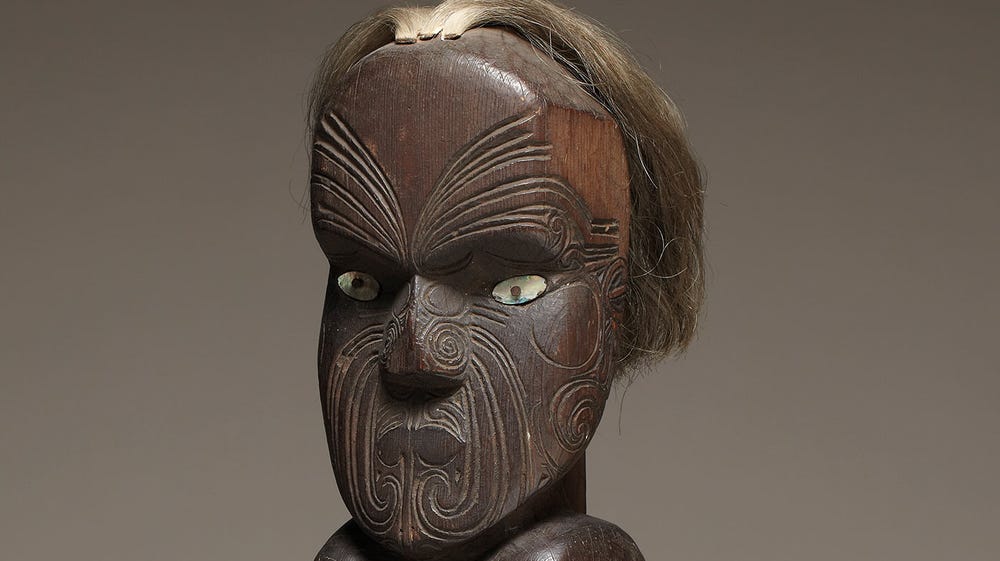Tekoteko (gable figure) of Ko Tuwhakairiora (detail), ca. 1880. New Zealand, North Island, Māori, Te Arawa, Ngāti Tarāwhai style. Wood, abalone shell (paua), and human hair, 55 1/2 x 7 1/2 x 7 3/8 in. (141 x 19.1 x 18.7 cm). Fine Arts Museums of San Francisco, California Midwinter International Exposition, through M. H. deYoung, 5522
About Oceanic art
The de Young has exhibited Oceanic art since it opened in 1895. Works purchased from the California Midwinter International Exposition by museum founder M. H. de Young and museum supporters established the Oceanic collection. The strength of this charter collection lay in small groups of objects, including New Zealand Maori wood carvings from meetinghouses of that period, as well as singular works of importance, such as a rare figurative weather charm from Micronesia. Future gifts provided a core collection of carved works from Indonesia, particularly architectural fragments from the 19th and 20th centuries. The collection is now broad in scope, spanning the vast Pacific triangle (from Easter Island to Hawaii and New Zealand), as well as Indonesia and the Philippines, with over 25 islands and island groups represented.
The Jolika Collection, including gifts from Marcia and John Friede and made possible with funding from the Phyllis C. Wattis Fund for Major Accessions and the Evelyn A.J. Hall Charitable Trust Fund, is a world-renowned collection of art from New Guinea. It is a pilgrimage collection including rare and key works. Many are from the Sepik province, known for its diverse and exceptional art forms; the collection represents the work of artists in clans and art producing villages throughout the island of New Guinea, including figurative carvings from Lake Sentani in West New Guinea, now part of Indonesia.
From the earliest acquisitions of Oceanic art, contemporary works have had, and will continue to have, an integral place in the collection. Twentieth-century artworks include rare paintings on pressboard by Australian Aboriginal artists from the beginning years of the Aboriginal art movement. Lisa Reihana’s video in Pursuit of Venus (infected), purchased with Wattis funds, is our first major acquisition of work by a contemporary Pacific artist and our first joint purchase with the Los Angeles County Museum of Art (LACMA). It speaks to the importance of telling Pacific histories along with Western accounts and developing the collection through a thoughtful and dynamic acquisition program.
